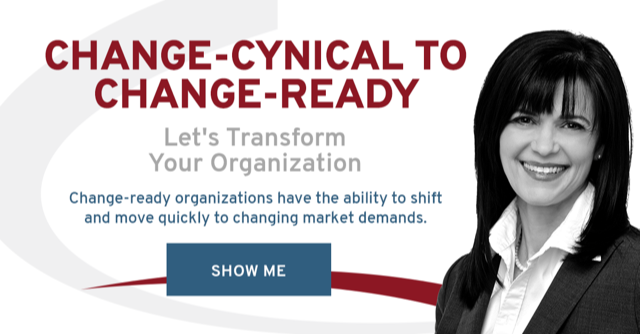When it comes to change, motivation is an inside job. It’s not an external reward that gets me onto the yoga mat on those dark, rainy mornings. It’s an internal desire that creates the willingness to get on the mat. Then it’s my sense of accomplishment that gets me up to do it again the next morning.
Employees who are intrinsically motivated perceive a choice; they don’t feel any internal or external coercion or demand to engage in the activity.
Start with Meaning to Help Build and Maintain Motivation During Change
Over 70 years ago Victor Frankel wrote, in his book, Man’s Search for Meaning, “Man’s search for meaning is the primary motivation in his life and not a secondary rationalization of instinctual drives”. That statement is as true today as it was when he wrote it.
But, change often means something different to the leaders initiating it than it does for the employees who will do the heavy lifting. One of the tools we teach leaders how to use in our Executive Change Leader Course is a Whitespace Map. They identify what the change means for them and for the people affected. Participants always find the results insightful and useful.
 That’s why the starting place for building motivation is to make the time and space to connect with people and understand what the change event means for you, your employees, and your organization. You can’t do this through email or simply telling them what it means. It takes real conversation and active involvement.
That’s why the starting place for building motivation is to make the time and space to connect with people and understand what the change event means for you, your employees, and your organization. You can’t do this through email or simply telling them what it means. It takes real conversation and active involvement.
Here are four conversation starters to help you explore and understand the meaning of a change event. They will help you enable motivation toward the new environment:
- What does this change event and the new activity mean for you? For the change-recipients?
- What is different/similar about what the change means for you versus the change-recipients? And why?
- What influence is the meaning I and each group or person gives to the change event having on our motivation to move toward or away from the new environment?
One last thing, there is no right or wrong when it comes to meaning. Leaders who approach change with a readiness mindset explore meaning without judgement.
If you would like to learn more about a Readiness Mindset and how to build and maintain motivation throughout the change process contact us to learn more about our change leadership courses, coaching, and consulting.
[1] Pink, D. (2009). Drive. London, England: Riverhead books.
[2] Halvorson, H. (2013). 8 Motivational Challenges.
[3] Mobbs, D., & McFarland, W. (2010). The Neuroscience of Motivation. NeuroLeadership Journal (3). P. 9
[4] Deci, E., Koestner, R., & Ryan, R. (1999). A meta-analytic review of experiments examining the effect of extrinsic rewards on intrinsic motivation. Psychological Bulletin, 125(6), 627-668.




